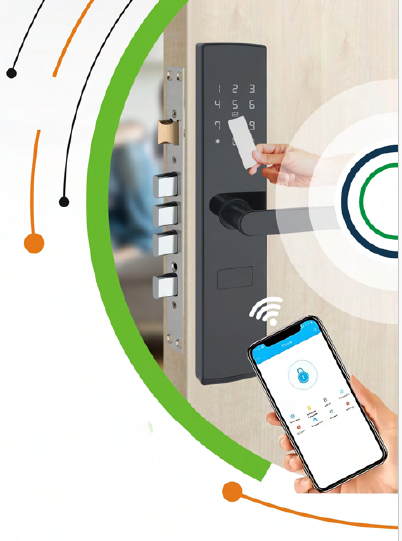Introduction:
In today’s rapidly evolving work environment, ensuring the security of office spaces is paramount. Digital locks have emerged as a cutting-edge solution, offering advanced features that go beyond traditional lock and key systems. Let’s explore how digital locks are transforming office security and revolutionizing access control in modern workplaces.

Securing Sensitive Spaces:
Digital locks provide robust security measures to protect sensitive areas within office buildings, such as executive suites, server rooms, and confidential file storage areas. With features like encryption, access logs, and customizable access permissions, digital locks offer enhanced protection against unauthorized entry and data breaches.
Streamlining Access Management:
Managing access to various areas of an office building can be a complex task, especially in large organizations. Digital locks simplify access management by allowing administrators to grant and revoke access privileges remotely. Whether it’s granting temporary access to contractors or restricting entry during non-business hours, digital locks offer unparalleled flexibility and control.
Enhancing Employee Convenience:
Digital locks enhance employee convenience by offering multiple access methods, including key cards, PIN codes, and mobile credentials. Employees no longer need to carry bulky keychains or worry about losing keys. Instead, they can use their smartphones or key cards to gain seamless access to the office, promoting efficiency and productivity.
Facilitating Flexible Work Arrangements:
With the rise of remote work and flexible work arrangements, digital locks play a crucial role in accommodating diverse employee schedules. Remote access capabilities allow employees to enter the office outside of traditional working hours, enabling greater flexibility and work-life balance. Additionally, digital locks can integrate with scheduling software to automatically adjust access permissions based on employee schedules.
Improving Visitor Management:
Digital locks streamline visitor management processes by providing temporary access codes or QR codes to guests and contractors. This eliminates the need for physical keys or escorting visitors throughout the building, freeing up valuable time for office staff. Additionally, access logs ensure accountability and track visitor activity for security purposes.
Adapting to Evolving Security Threats:
In today’s digital age, security threats are constantly evolving, requiring organizations to stay ahead of the curve. Digital locks offer built-in security features such as anti-tampering mechanisms, intrusion detection, and remote firmware updates to mitigate emerging threats and vulnerabilities. By investing in digital lock technology, offices can stay one step ahead of potential security risks.

Conclusion:
Digital locks have become indispensable tools for enhancing office security and access control in modern workplaces. From securing sensitive areas to streamlining access management and accommodating flexible work arrangements, digital locks offer a wide range of benefits for organizations of all sizes. By embracing this technology, offices can create safer, more efficient work environments that meet the needs of today’s dynamic workforce.
